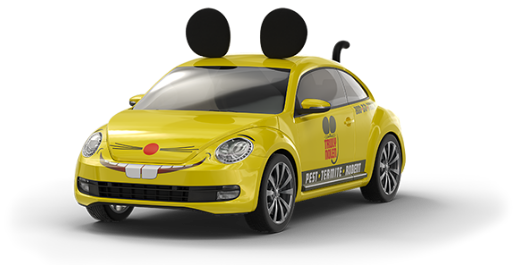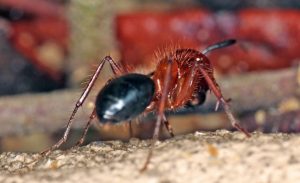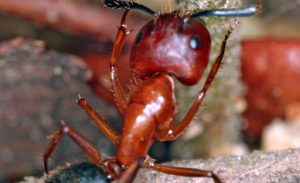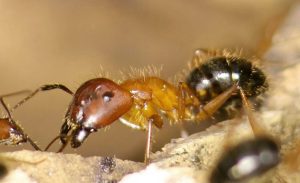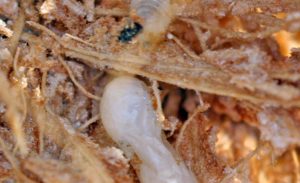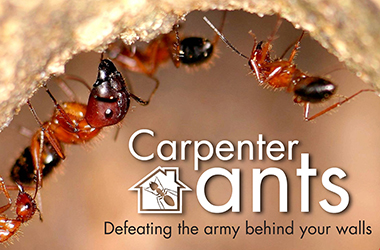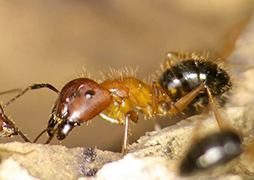
Carpenter Ant Facts
- Size: 0.76 to 2.54 cm in length, relatively large for ants
- Habitat: indigenous to most forested areas of the world, they thrive in high-moisture areas, preferring moist, decaying or hollow wood; however, some species have adapted to the dry areas of the American southwest
- Color: black
- Name: carpenter ants get their name because they excavate wood to make nests. It’s a bit of a misnomer because carpenters make things from wood, whereas carpenter ants destroy wood, causing as much structural damage as termites.
Carpenter Ant Behavior
Drawn to moist wood under and around windows, roof eaves, decks and porches, carpenter ants tunnel through damp wood to the solid dry wood inside your home. Carpenter ants also tunnel outside constructing extensive underground tunnel systems, often leading to a food source. Outdoors, carpenter ants prefer to feed on the honeydew produced by aphids. Indoors, carpenter ants go for sugary, fatty foods in your kitchen.
Carpenter ants are foragers. Most species of carpenter ants forage at night, collecting and consuming dead insects. Workers surround dead insects, extract their bodily fluids and carry them back to the nest. Sometimes, carpenter ants bring the head of insects back to the nest, where they extract their inner tissues for food. Also, a few species of carpenter ants collect live insects. Worker carpenter ants forage individually or in groups, although they often opt to forage individually.
Carpenter Ants versus Termites
Often confused with termites, carpenter ants do not actually eat wood but excavate it in order to carve out their nests, tunneling through moist or damp wood. The presence of sawdust indoors can be a telltale sign of a carpenter ant infestation.
- How to get rid of Ants
- Ant Infestations
- Bites and Treatment
4 Seasons Pest Control

Satisfaction Guarantee
What it includes*
-
Ants
-
Crickets
-
Fleas
-
Mice
-
All Roaches
-
Scorpions
-
Spiders
-
Ticks
-
Wasps
-
Other*
